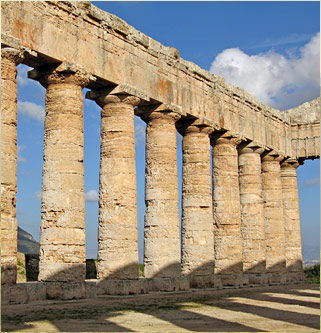|
Situated on the island of Sicily, Segesta is a site steeped in the history of Ancient Greeks and Romans. Located about an hour southwest of Palermo, the city offers visitors a chance to get up close and personal with history with its amazing Tempio (Temple) of Segesta, situated just outside the city perimeter. The history of the region includes invasions, wars, being conquered by the Greeks, besieged by the Romans and linked through its populace to the mighty Trojans. Segesta was one of the three major cities where indigenous peoples of Sicily settled, but after three millennia of activity, the city began to decline in the 1st century and within the era was destroyed by vandals. It was never resettled. The ruins of the city are located on the top of Monte Barbaro. From the site there is a stunning view over the neighboring valley towards the Gulf of Castellamare.
|
|
Temple of Segesta
The Tempio (Temple) of Segesta is one of the best preserved ancient temples in all of Italy. Unlike the many ruins that mark the Sicilian archaeological landscape, this temple is full of scope and dimension, and its carved columns remain reasonably intact. Built in the 5th century, the structure is perched on an almost 1000 foot rise, overlooking the edge of a deep ravine. Visitors can spend the day marveling at the artistic mastery of the 36 carved Doric columns that support the temple’s entablatures and pediments. At sunset, the temple provides one of the best views in all Sicily, taking in the peaks of Monte Barbaro and Monte Bernardo.
Greek Theater
Another of Segesta’s famous landmarks is the Greek Theater. Dating as far back as the 3rd century B.C., the theater is a wonderful example of ancient Greek architecture. Comprised of a semicircle with a 207 foot diameter, the materials for this structure were carved from the side of the neighboring mountain. Before the city fell into ruin, Segesta had a lively population that attended temple and theater with equal gusto. In its heyday, the Greek Theater could hold an audience as large as 4,000. Today, the ancient stage is still used for both modern and classical plays presented annually during the summer months.
|



